Books as gifts! Yes, please!
by Jan Johnson, Teen Librarian

What’s more magical than walking into a bookstore to look for just the right book for a loved one or friend? At Manhattan Public Library, we’re here to help with your librarian-approved guide to gifting the perfect book for everyone on your list — and maybe find a great read for you, too.
Our children’s librarians have come up with their favorite newer books for younger book lovers. Rachel suggested the best of the best, Sue Farrell Holler’s “Raven, Rabbit, Deer”, illustrated by Jennifer Faria. It’s a sweet, wintertime adventure between a young boy and his grandfather as they walk through a forest, discover animal tracks, and give Ojibwemowin names to the creatures they encounter. This book is full of love and wonder.
Anything by Mo Willems is sure to be a hit with young readers. The “Unlimited Squirrels” series has a delightful cast of squirrels, acorns, and other friends. Each book features a funny, furry adventure and bonus jokes, quirky quizzes, nutty facts, and so, so many squirrels!
Is your grade-schooler a lover of history and graphic novels? The two latest History Comics editions should be on your list! “History Comics: The National Parks: Preserving America’s Wild Places” by Faylynn Koch introduces the visionaries, artists, and lovers of the American wilderness who fought to protect these spaces for future generations. “History Comics: The Stonewall Riots: Making a Stand for LGBTQ Rights” , illustrated by A. Andrews, follows three teenagers who are transported from their modern lives to the legendary Stonewall Inn in the summer of 1969. Escorted by Natalia’s eccentric abuela, the friends experience firsthand the Stonewall riots that made the struggle for LGBTQ rights front-page news.
For the teens in your life, you’re going to need to ask some questions! Which graphic novels and manga do they love and already have? Pick up the new art or recipe books from their favorite series. My teen has “The Promised Neverland: Art Book World” authored by Kaiu Shirai and illustrated by Posuka Demizu on their list. If your anime fan is also an aspiring chef, try “The Unofficial Studio Ghibli Cookbook” by Jessica Yun, which brings together Japanese recipes inspired by Hayao Miyazaki’s most beloved films. It’s sure to be a delicious treat.
If your teen loves novels, this year’s National Book Award for Young People’s Literature is “All My Rage” by Sabaa Tahir. This brilliant, moving, and heart-wrenching contemporary young adult novel about family, forgiveness, love, and loss is a compelling story crossing generations and continents. Another book on my list-for-teens is “Braiding Sweetgrass for Young Adults: Indigenous Women, Scientific Knowledge and the Teaching of Plants.” This adaptation for young readers of the 2013 adult bestseller of the same name is by Potawatomi botanist, Robin Wall Kimmerer, and Monique Gray Smith of Cree and Lakota descent. This adapted version beautifully expresses the value and relationships with nature that many Indigenous people hold.
When it comes to the adults in your life, focus on what they love. If they are Barbara Kingsolver fans, her new book “Demon Copperhead” was released in October. Or if your best friend loves cooking blogs, check out “Smitten Kitchen Keepers: New Classics for Your Forever Files” by Smitten Kitchen blogger and Bon Appétit columnist, Deb Perelman. Perelman has collected her favorite no-fail recipes for her third cookbook.
Have a Trekkie in your life? “Phasers on Stun!: How the Making (and Remaking) of Star Trek Changed the World” by Ryan Britt chronicles the entire history of Star Trek and reveals its enduring place in pop culture thanks to innovative pivots and radical change.
Next time you’re in the library, ask the staff for our lists of reading recommendations. They are updated each month and focus on the ages and interests of our community of readers. Also check out Rosie’s Corner, your first stop for gently-used books, coffee table books, CDs, and DVDs for all ages at awesome prices! Bonus: Proceeds from Rosie’s Corner help fund your library’s programming. For more Manhattan Public Library resources and information, visit mhklibrary.org day or night from the comfort of your own reading chair.




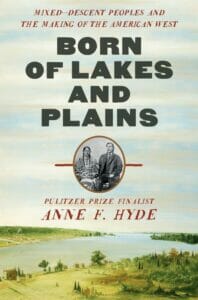 Indigenous Kansas was the theme of this year’s October 10th Indigenous People’s Day, hosted at K-State by the members of the Indigenous Faculty Staff Alliance (IFSA). IFSA is composed of both Indigenous and non-Indigenous faculty and staff from across the university. They work through all levels of the university and community to support diversity and inclusion across the board. I have proudly been a member since my arrival in Kansas in 2016. With their encouragement, I quickly found a home, gained many new Aunties, and became curious about the Indigenous history at K-State, which led me on a multi-year journey and research project. This focus on Kansas Indigeneity respired my curiosity about how Indigenous students were or weren’t documented in K-State history.
Indigenous Kansas was the theme of this year’s October 10th Indigenous People’s Day, hosted at K-State by the members of the Indigenous Faculty Staff Alliance (IFSA). IFSA is composed of both Indigenous and non-Indigenous faculty and staff from across the university. They work through all levels of the university and community to support diversity and inclusion across the board. I have proudly been a member since my arrival in Kansas in 2016. With their encouragement, I quickly found a home, gained many new Aunties, and became curious about the Indigenous history at K-State, which led me on a multi-year journey and research project. This focus on Kansas Indigeneity respired my curiosity about how Indigenous students were or weren’t documented in K-State history.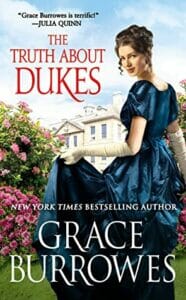 Since “Bridgerton” first took Netflix by storm in 2020, there’s been a renewed surge of interest in Regency romances. On screens, there’s been “Bridgerton” season two, a similarly-cast adaptation of “Mr. Malcolm’s List,” a second season of “Sanditon,” and a remake of Jane Austen’s “Persuasion.” In print, there’s the usual steady stream of Regency-set romance novels, but a growing swath of these focus on narratives that have thus far been decidedly outside of the mainstream.
Since “Bridgerton” first took Netflix by storm in 2020, there’s been a renewed surge of interest in Regency romances. On screens, there’s been “Bridgerton” season two, a similarly-cast adaptation of “Mr. Malcolm’s List,” a second season of “Sanditon,” and a remake of Jane Austen’s “Persuasion.” In print, there’s the usual steady stream of Regency-set romance novels, but a growing swath of these focus on narratives that have thus far been decidedly outside of the mainstream.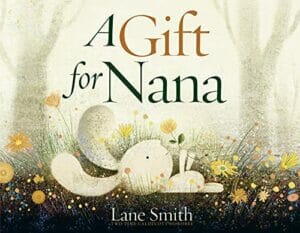 Today is Sweetest Day, a little-known holiday reportedly started by the candy industry more than 100 years ago, and celebrated similarly to Valentine’s Day in some spots of the Midwest. But Sweetest Day has the added impact of encouraging other sweet actions as well, such as helping your neighbors, doing acts of kindness, and giving gifts to friends and people in need. These themes show up in many children’s books, I think because children have a big heart for people who need some uplifting, and children are excellent purveyors of love and kindness with the ability to melt the hearts of others. Here are some sweet books to share with children to celebrate the holiday.
Today is Sweetest Day, a little-known holiday reportedly started by the candy industry more than 100 years ago, and celebrated similarly to Valentine’s Day in some spots of the Midwest. But Sweetest Day has the added impact of encouraging other sweet actions as well, such as helping your neighbors, doing acts of kindness, and giving gifts to friends and people in need. These themes show up in many children’s books, I think because children have a big heart for people who need some uplifting, and children are excellent purveyors of love and kindness with the ability to melt the hearts of others. Here are some sweet books to share with children to celebrate the holiday.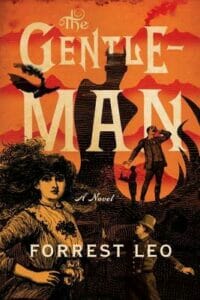 I recently went on a vacation where I had copious amounts of time to read. That doesn’t happen very often anymore. Despite one of the greatest misconceptions about working in a library, I don’t sit around at work reading books, and when I get home there are other distractions that readily pull me away from reading, like watching a tiny human or doing adult things like washing dishes. But when the opportunity presents itself to sit in the shade on a nice day reading books for hours, I do my best to embrace it.
I recently went on a vacation where I had copious amounts of time to read. That doesn’t happen very often anymore. Despite one of the greatest misconceptions about working in a library, I don’t sit around at work reading books, and when I get home there are other distractions that readily pull me away from reading, like watching a tiny human or doing adult things like washing dishes. But when the opportunity presents itself to sit in the shade on a nice day reading books for hours, I do my best to embrace it.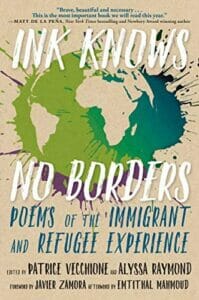 The
The 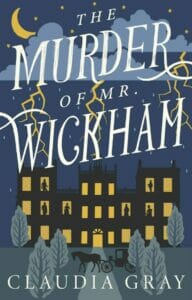 In my opinion, there is no better way to spend a fall afternoon than curled up in a comfy chair, with a cup of tea and a good mystery novel. Here are some of the new mysteries available at Manhattan Public Library.
In my opinion, there is no better way to spend a fall afternoon than curled up in a comfy chair, with a cup of tea and a good mystery novel. Here are some of the new mysteries available at Manhattan Public Library.